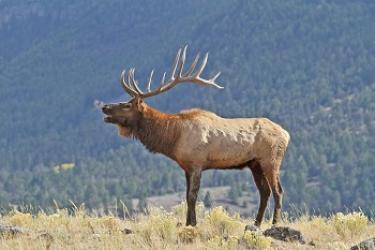Activities You Can Do For Elk
Management of your woodland can help ensure habitat for elk, and if elk are present in large numbers, you may need to take special management actions to ensure your woodlands stay healthy.
Land use
The number one action you can take to help elk is to keep your woodland in tact and avoid any future fragmentation. Keeping land as sustainably managed forest is essential for elk, whose historic range has been squeezed by agricultural, energy and residential development. Consider taking action to further protect elk range:
- Coordinate with other nearby landowners to help ensure a large block of habitat.
- Increase and protect roadless areas to help maintain elk migration pathways and keep animals safer from automobiles.
- Identify areas that could provide winter range at low elevations and consider acquisition and enhancement, and perhaps setting up conservation easements for elk.
- Talk to your local Fish and Wildlife office to find out about incentives and cost-share programs.
Management for healthy elk habitat
Like all wildlife species, elk benefit from healthy habitat. Managing your woodland for forest health will ultimately help all wild species. Here are some specific management actions to consider.
- Prescribed burning and thinning: There are multiple benefits to controlled burning according to a woodland’s historic fire regimen. Thinning your woodland can have similar outcomes, and both are important for elk because they allow more sunlight to reach the forest floor. This added sunlight encourages growth of new forage.
- Plant native species: In natural meadows, edge habitat, disturbed soil, and open areas within the forest canopy you can encourage native plants that provide fruit, nuts, berries or browse for wildlife. When using a seed mix, make sure you are getting a locally sourced native mix. Nonnative mixes can contain plants that will not support elk and may take over if they have invasive tendencies. When in doubt, check with a local wildlife or plant biologist. Note: Do not enhance habitat near roads, which may increase the incidence of elk-automobile collisions.
- Control invasive non-native weeds which will squeeze out native plants.
- Consider your seasonal management plan: Planning disruptive management activities outside of important seasons for elk, especially late summer, can help ensure that elk get enough food to survive the winter. During management work, try to protect forage plants.
How can I get more tips?
It’s simple! Enter your email below.

